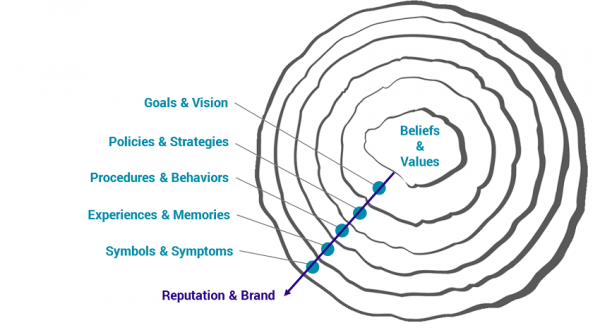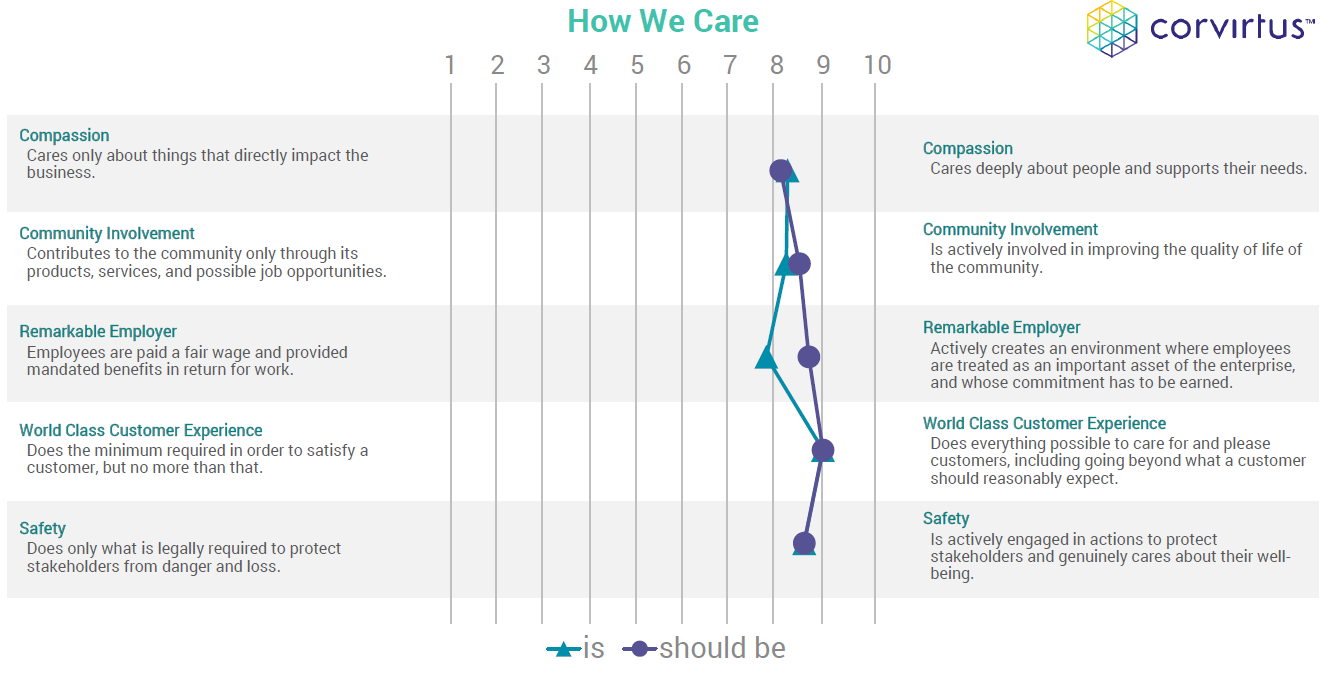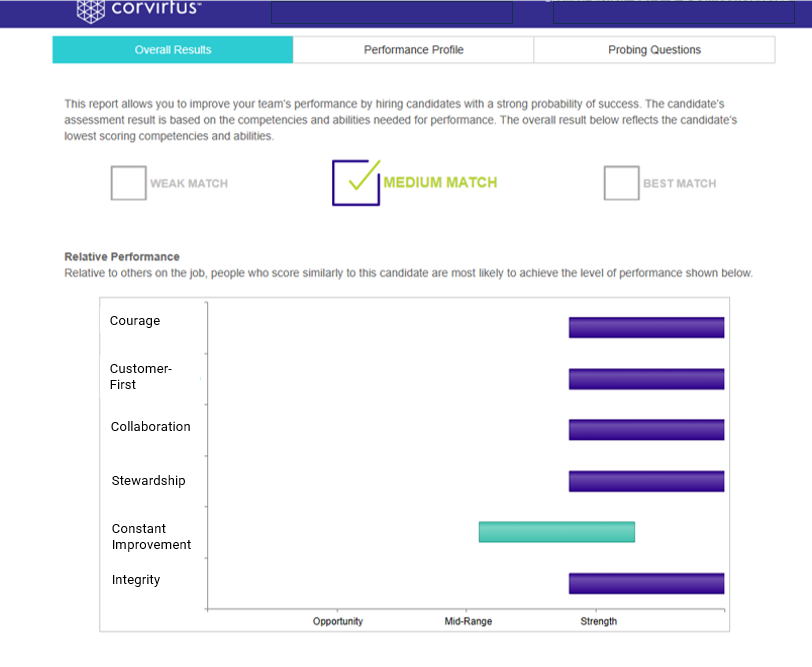Every interview question you ask is a cultural statement. Not just about who you want to hire, but about who your organization is becoming.
Think about it this way: if your interview process consistently rewards certain types of responses, you're essentially programming your culture one hire at a time. The questions you ask don't just reveal cultural fit—they actively shape the beliefs and behaviors that will define your organization.
The Hidden Power of Interview Questions
Anthropologist Yuval Noah Harari argues that shared beliefs are what allow humans to cooperate in groups larger than 150 people. In companies, these shared beliefs become your culture. And nowhere are these beliefs more powerfully transmitted than in your hiring process.
Your interview questions are cultural DNA tests. They reveal what you truly value, what behaviors you reward, and what kind of people you want representing your organization. More importantly, they become self-reinforcing prophecies.
Tale of Two Cultures: What Questions Actually Build
Southwest Airlines asks: "Tell me about a time you broke a rule for a customer."
This isn't just testing customer service skills. This question is actively programming several cultural values:
- Rule-breaking creativity - We value people who think independently
- Customer-first thinking - Customer needs trump rigid processes
- Personal accountability - We trust you to make judgment calls
- Storytelling ability - We want people who can communicate experiences effectively
The result? A workforce that naturally collaborates, solves problems proactively, and delivers industry-leading customer satisfaction. Southwest's 15-minute gate turnarounds aren't just operational efficiency—they're the direct result of hiring people who instinctively prioritize customer experience over rigid procedures.
Uber (in their crisis years) asked: "What would you do to increase rides by 10%?"
This question programmed a very different culture:
- Growth at any cost - Results matter more than methods
- Individual performance - Your success is measured by your personal metrics
- Competitive aggression - Winning is everything
- Rule indifference - The question notably lacked ethical guardrails
The result? A culture that prioritized individual achievement over collaborative success, leading to regulatory battles, harassment scandals, and billions in losses. The question didn't just reveal aggressive candidates—it actively selected for them.
How Beliefs and Values are the Core of Culture

The Science Behind Question-Culture Connection
When you consistently ask certain types of questions, three things happen:
1. Selection Effect: You attract and hire people who naturally give the responses you're looking for.
2. Signal Effect: Candidates understand what behaviors and values you reward, and successful hires continue displaying these traits.
3. Reinforcement Effect: Interviewers who repeatedly evaluate candidates against these criteria become more deeply committed to these values themselves.
The Implementation Challenge: Why Most Organizations Fail
Understanding the power of culture-first hiring is one thing. Actually executing it? That's where most organizations stumble.
The typical company faces four critical gaps:
Cultural Clarity Gap: They know they want "good culture fit" but can't articulate what behaviors that actually means. Generic values like "teamwork" and "innovation" provide no hiring guidance.
Question Design Gap: Even when they know what culture they want, they don't know how to craft questions that reliably surface those specific behaviors. They end up with generic behavioral questions that don't differentiate their desired culture.
Interviewer Calibration Gap: Multiple interviewers interpret the same candidate responses completely differently, creating inconsistent cultural assessment. What signals "leadership" to one interviewer reads as "aggressive" to another.
Measurement Gap: They have no way to track whether their interview questions are actually building the culture they intended. They measure time-to-hire and candidate satisfaction, but not cultural cohesion.
The result? Hiring processes that accidentally program culture rather than intentionally building it.
Building Culture-First Hiring That Works
Successful culture-first hiring requires systematic approach across four dimensions:
1. Cultural Architecture
Define culture in behavioral terms. Instead of "we value innovation," specify "we value people who propose ideas others initially reject" or "we value people who iterate quickly after failure."
We're intense about this approach with our CultureMap™ process, which measures culture across 23 specific dimensions and identifies gaps between current and desired culture. Our framework examines core cultural dimensions. Beliefs about how the organization -
- Views results
- Acts and behaves
- Cares
- Competes
- Is Unique

This transforms vague values like "teamwork" into measurable behaviors that can be systematically assessed.
Map questions to behaviors. With the CultureMap, or something similar, you can define and select core cultural behaviors. Each of these should have 2-3 specific interview questions designed to surface authentic examples of that behavior.
Create evaluation frameworks. Rather than relying on gut instinct, maximize both the candidate experience and the accuracy and effectiveness of hiring with scientifically validated pre-employment assessments for your culture. These combine personality, cognitive ability, situational judgment, and culture-fit measurements. Hiring assessment tools increase the predictive validity of interviews by distinguishing genuine cultural alignment from rehearsed talking points through validated scoring frameworks.

2. Interviewer Excellence
Train for cultural assessment. Most interviewers are trained on legal compliance and basic behavioral interviewing, but not cultural assessment. While competence and understanding of the legal guardrails of interviewing is key, we're missing a key piece of interviewing by not tackling how to use the specific tools in the process. A simple way to solve this is by starting with structured, competency-based interview guides that provide specific questions, follow-up prompts, and behaviorally anchored rating scales. This makes training easier to scale across a team, department, or even a whole organization.
Standardize evaluation criteria. Ensure every interviewer understands what your culture means in values and behavior. This requires moving beyond subjective judgment to consistent frameworks that define what collaboration, innovation, or customer focus actually looks like in your environment.
Provide real-time guidance. The most effective interview processes integrate assessment data with interview questions, so interviewers can explore specific areas where candidates showed strength or concern. This creates a seamless flow from screening through final interviews, with each conversation building on validated insights about cultural alignment.

3. Systematic Measurement
Track predictive validity. The gold standard for hiring involves conducting validation research, or studies, that test organization-specific assessment tools on current high performers to ensure the hiring process is actually measuring what matters. This means analyzing which specific questions and assessment scores correlate with long-term success, retention, and cultural contribution.
Monitor cultural drift. Advanced measurement systems track whether recent hiring patterns strengthen or dilute organizational culture. For example, one restaurant chain using validated cultural assessments saw turnover drop from over 100% to below 40% by systematically tracking which cultural traits predicted success.
Correlate outcomes. Connect cultural assessment scores with retention, performance, and team cohesion metrics. Organizations using evidence-based cultural hiring report measurable improvements: 25%+ reductions in turnover, faster time-to-productivity, and increased employee satisfaction scores.
4. Continuous Reinforcement
Integrate across hiring stages. Rather than assessing culture only in final interviews, systematic approaches evaluate cultural alignment from initial phone screens through onboarding. Assessment results inform every conversation, creating consistency and depth in cultural evaluation.
Extend into onboarding. The cultural traits identified during hiring should immediately guide new hire development. When you hire someone because they "iterate quickly after failure," their first projects should explicitly reward rapid experimentation over perfect planning.
Create feedback loops. Leading organizations continuously monitor how assessment scores predict actual performance, using post-hire data to refine their cultural hiring approach. This creates a self-improving system where cultural alignment becomes more accurate over time.
The ROI of Intentional Culture-Building
Companies that systematically align their interview questions with their desired culture see measurable results:
- 40% lower turnover - People hired for cultural alignment stay longer
- 12% higher productivity - Aligned employees require less oversight
- 2.3x faster decision-making - Shared values enable autonomous choices
- 67% higher employee satisfaction - Cultural cohesion improves workplace experience
Southwest's culture-first hiring approach has delivered 47 consecutive years of profitability. Uber's growth-first approach cost them $2.9 billion in legal settlements and regulatory fines.
Real-World Results: When Culture-First Hiring Works
The systematic approach to culture-first hiring isn't theoretical—organizations are seeing measurable results:
Several of our fast-growing restaurant groups implemented structured cultural assessments and interview processes and achieved a 25% reduction in turnover within six months. More importantly, they saw improved guest satisfaction scores as more culturally aligned employees stayed longer and developed stronger customer relationships.
Trillium Surveyor, a RegTech company, used cultural mapping processes to define and embed core values like Empathy, Intuitive Innovation, and Reliability. This systematic approach to culture definition enabled them to hire consistently for these specific traits rather than generic "cultural fit."
The key difference? These organizations moved beyond asking "Do you fit our culture?" to systematically defining what their culture actually looks like in behavioral terms, then building hiring processes that reliably identify those behaviors.
This scientific approach, developed by our team of talent acquisitions specialists, expert programmers, and industrial-organizational psychologists, combines multiple assessment types—personality, cognitive ability, situational judgment, and culture-fit measurements—into integrated hiring solutions that predict both performance and retention.
Questions That Build Specific Cultural Outcomes
To Build Collaborative Culture:
- "Tell me about a time you made someone else successful."
- "Describe a situation where you had to give up individual credit for team success."
To Build Innovation Culture:
- "What's something you believed that others thought was wrong?"
- "Tell me about a time you failed at something and what you learned."
To Build Customer-Centric Culture:
- "Describe a time you went beyond what was required for a customer."
- "Tell me about a situation where company policy conflicted with customer needs."
To Build Learning Culture:
- "What's something you were completely wrong about?"
- "Tell me about a time you had to defend an unpopular position."
Making Culture-First Hiring Your Competitive Advantage
The most successful organizations don't just hire for culture fit—they systematically build the culture they want to become. They understand that every interview question is a vote for their organizational future.
This requires moving beyond gut instinct to systematic cultural hiring. It means defining culture in measurable terms, training interviewers on consistent evaluation frameworks, measuring predictive validity, and creating continuous feedback loops.
The companies that master this systematic approach don't just maintain their culture—they use it as a tool to strengthen stable and successful growth. They make faster decisions, adapt more quickly to change, and attract top talent who want to be part of something unified and purposeful.
The tools and methods are available to start today. Cultural mapping processes (whether through Corvirtus or your own process) defines your culture in behavioral terms. Validated assessments can measure the specific traits that predict success in your environment. Structured interview guides can ensure consistent evaluation across all interviewers.
The question isn't whether the science works—it does. The question is whether you're ready to implement it systematically.
The Bottom Line
Your interview questions aren't just tools for selection—they're instruments for culture creation. Every question you ask is a vote for the kind of organization you're building.
The question isn't whether your interviews are shaping your culture. They are. The question is whether you're doing it intentionally.
What culture are your questions building?




